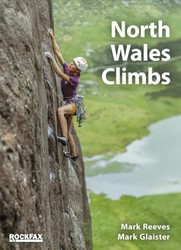Seasonality
Summary
Crag features Two tiers of generally sound quality limestone, averaging about 10m in height.
For Quarry Wall: Its situated on the right-hand side of the road if you approach from ruthin and is a couple of hundred yards from the pwll glas sign at the beginning of the village. The crag although one of the most roadside venues in the area does require a 10 min walk due to where you need to park. this should be either the large laybe on the left handside in the village itself or just the otherside of the bridge which leads to Llanfair dc.
Approach
Approach notes Take the A494 from Ruthin south towards Bala for about 3 miles until you reach Pwllglas at a large lay-by on the left hand side. Park here and walk back towards Ruthin for about 100m to a turning on
the right. Follow this lane, passing a renovated mill, over an old railway bridge and past several houses until the road ends and a public footpath crosses the road, take the footpath on the right. When the footpath forks, take the path on the right until the escarpment can be seen on the left.
Please do not drive the car up the road, as parking there will cause annoyance to the owners of the houses, and thus potentially cause access problems.
Ethic
Originally only 1 bolt was ever placed for safety on a British 6c. All the routes were climbed ground up, no preinspection, no top roping. Only one fall on a first accent was ever taken and that resulted in a ground fall from 20 feet due to a loose hold. The route was completed without the original runner placement. It's sad to see routes originally done in a pure style now bolted and graded as sports climbs.
History
Originally interest in the Crag was shown by R.J Cooper, S.A.Garner, E.J. Pritchard, D.J. Kear, C.J. Butterfield and Messrs. Hewer and Thomson. The pupils of Ruthin School under the guidance of Keith Thomson a teacher at the school in the late 1970's. There was a small paperback guidebook printed by the school with about 30 climbs. The development of the Crag really started in the early 1980's with a Rhodesian climber Rory Williams who moved to Ruthin. Most of the top sections of cliff were done the full length and numerous obvious lines on the lower section. Some of the harder routes climbed on the lower section were hard to protect and on one of the routes a ground fall was taken from 30ft when the only friend pulled out when a hold broke. The climb was completed without the friend. Unfortunately the notes of many of the ascents was lost so they were never recorded. The recorded routes are all from memory and are not the full list. The crag has since become popular. Like many of these small local crags if the route is obvious it's probably been climbed before much like Pothole Quarry. Originally there were no bolts except 1 due to the severity of a potential fall. All the climbs were done ground up on site up to British 6c. No top roping in those days. Since then all these routes have been bolted and regraded as sport climbs. Originally they were trad and onsighted. Some have also been upgraded since the original gradings.
A point of note. This crag was a daily training ground for over 10 years. Which means if the route was less than 20 feet its been climbed for training. In those days bouldering was not a sport it was a means to an end. Fitness. The limits were being pushed and often 20 boulder problems along the whole length of the Crag were being done every day. I've seen numerous claims to boulder problems which I'm afraid were climbed by someone in the 1960s 1970's or 1980's.
Tags
Plan your Trip
This crag is unlocated
If you know where this crag is then please take a minute to locate it for the climbing community. Please contact us if you have any issues.
Selected Guidebooks more Hide
Author(s): Mark Reeves & Mark Glaister
Date: 2023
ISBN: 9781873341933
A selective guidebook by Rockfax deswcribing the best rock climbing found in North Wales, covering Llanberis Pass, Cloggy, Ogwen, the Carneddau, Llanberis Slate quarries, Tremadog, the Moelwyns, the Gwynant Valley, Mid-Wales, Gogarth and the Ormes of Llandudno.
Author(s): S. Broadbent
Date: 2022
Volume 1 of this climbing guide contains more than 4700 routes on 89 crags in northern England and Wales / primarily 5 to 7b on the French scale.
Accommodations nearby more Hide
Share this
Get a detailed insight with a timeline showing
- Ticks by climbers like you
- Discussions of the community
- Updates to the index by our users
- and many more things.
Login to see the timeline!


